A Tale of Two Cities: fragment of extremely rare 17th century Glasgow Catechism uncovered
A few months ago, while walking the stacks of our 17th century collections, a copy of Andrea Morosini’s folio Historia Veneta (1623) caught my eye. Normally, when trolling stacks of early printed books for something interesting you’re looking for that one shining thing in a sea of brown calf spines; an elaborately tooled pigskin spine can almost guarantee an equally fantastic binding (and most likely German to boot), a smooth spine (i.e. without raised bands) bound in vellum often hints at an Italian imprint in its original trade binding. Sometimes, and in most cases unfortunately, a cracked spine, or a separate board, will hint at what lies beneath.
Such was the case when I ran my eye across r17f DG676.3M7; the book had been tied and the leather was separating from the board at the spine and at the corners. I pulled this item off the shelf to inspect it’s preservation needs, and was shocked when I opened the books to find this on the inside board:
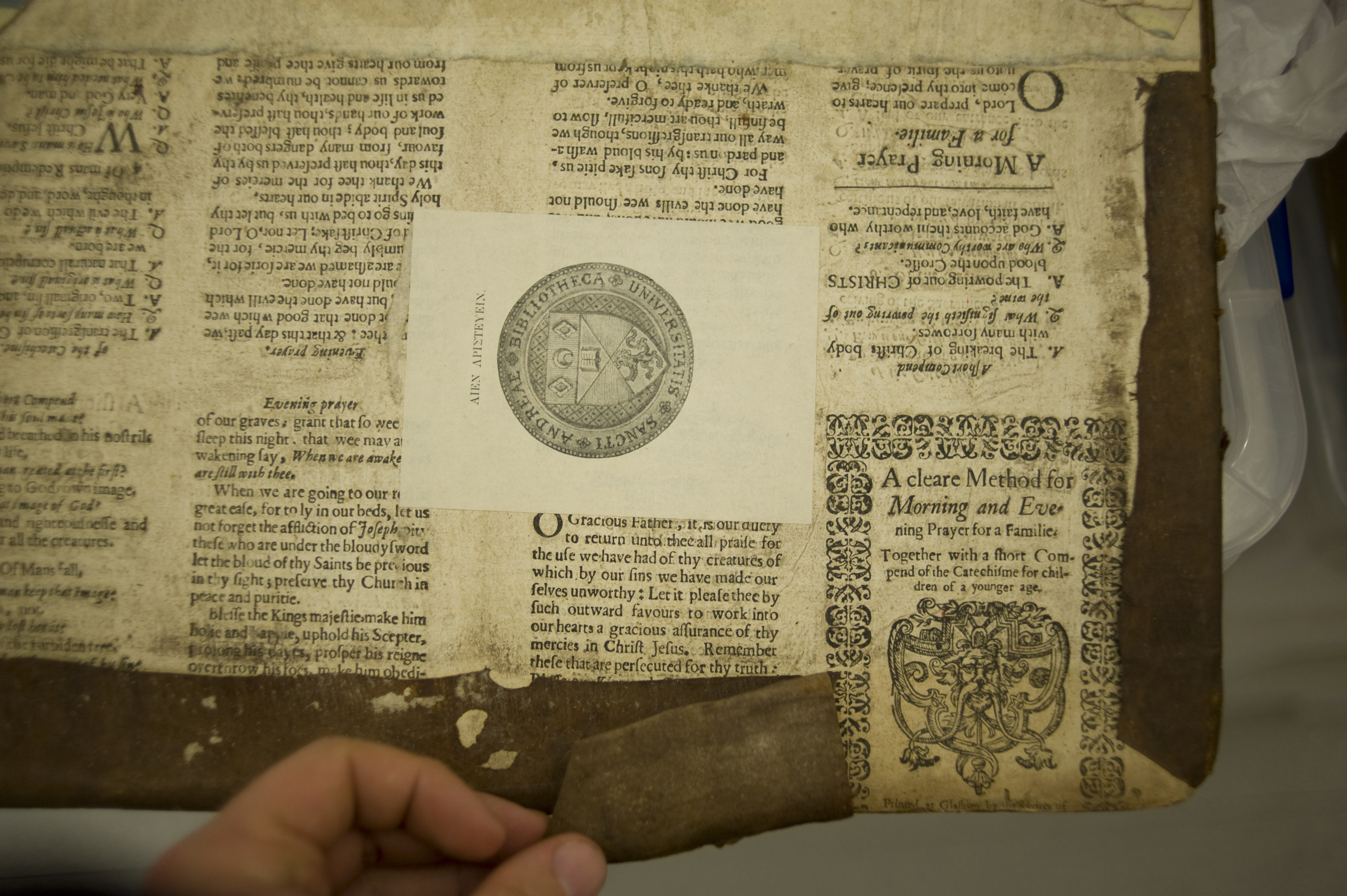
Not only had one uncut sheet of this prayer book and catechism been used as a pastedown, some of the raised leather on the back board and a lifted corner of the marbled endpaper on the back board revealed that several sheets of this book had been used to create the board for this 17th century binding.
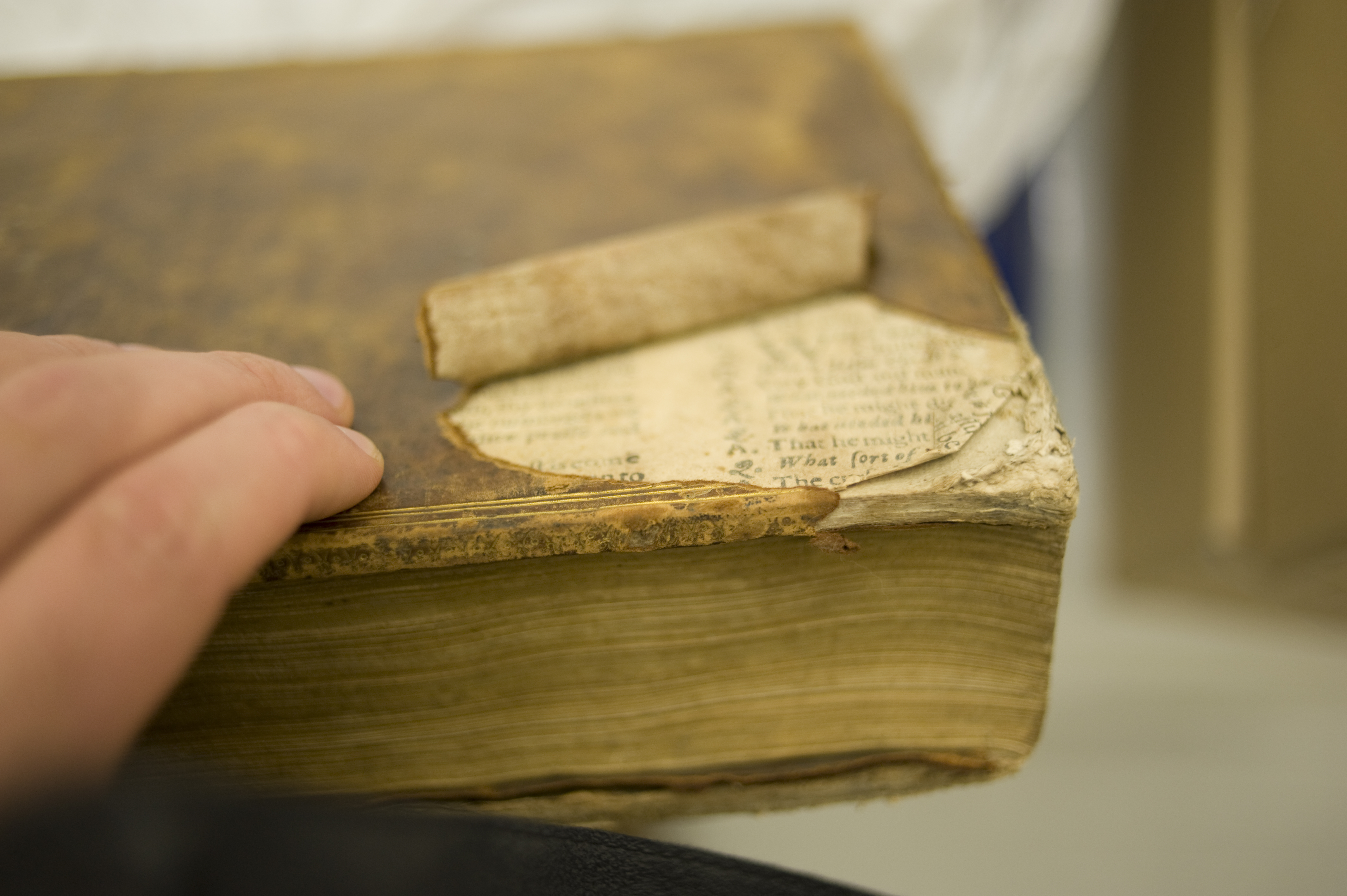
Taking this back to my desk, I made quick work of getting Morosini’s Historia Veneta on the catalogue (there’s several copies of this in British, European and American Libraries), but stumbled when it came to finding any reference to that which had been used as paste-boards. These uncut sheets thankfully retained their title page: “A cleare method for morning and evening prayer for a familie: together with a short compend of the catechisme for children of a younger age” and a portion of the imprint remained: “Printed at Glasgow by the Heirs of…,” however the crucial date had been lost, and none of the sheets below the top sheet used for the front paste-board was visible. Unfortunately, an exhaustive search on ESTC brought back no hits, and so the hunt was on!
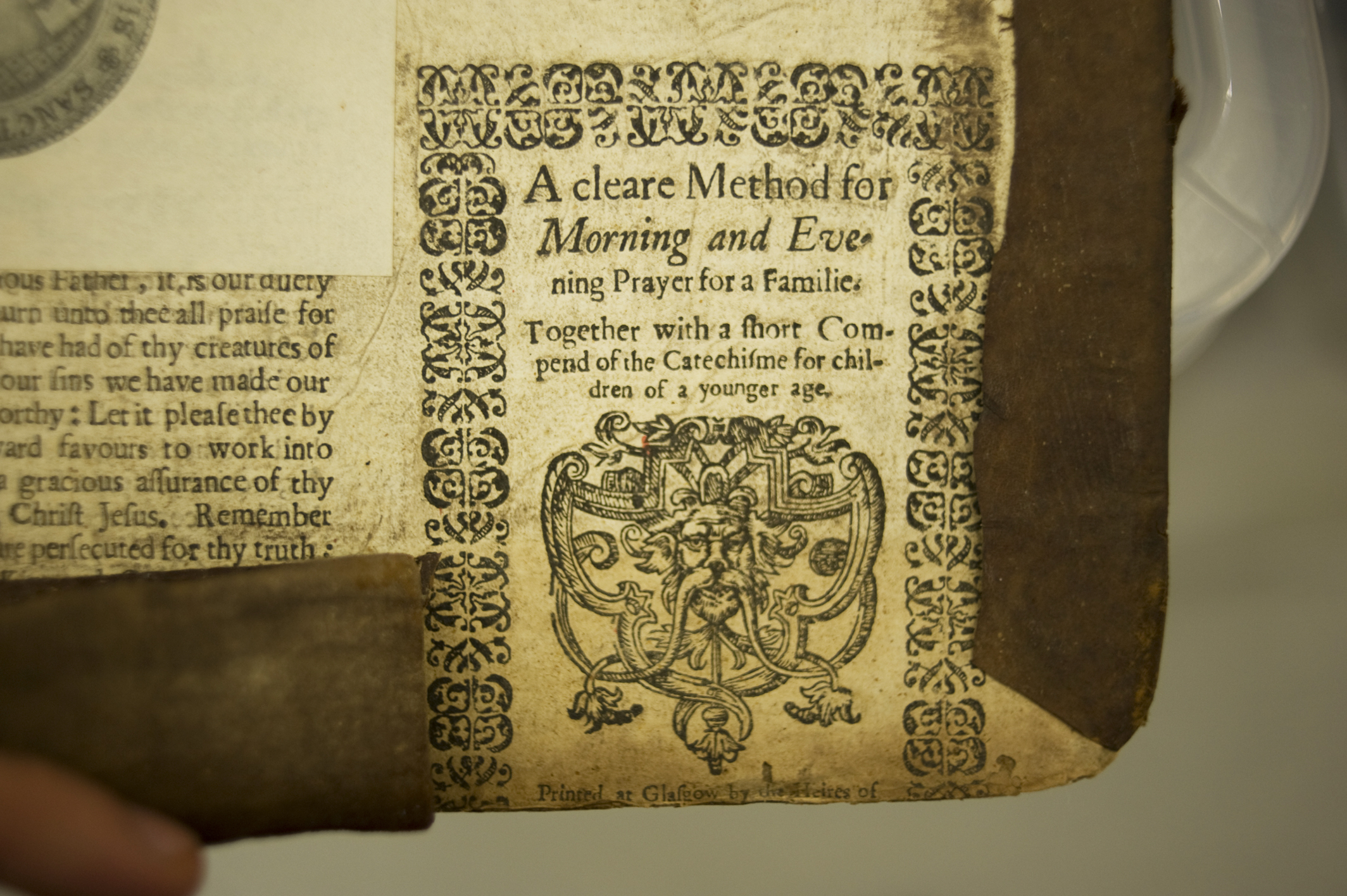
After doing some digging, I found a reference to a portion of a copy catalogued at the National Library of Scotland, which wasn’t quite matching in the spelling of the title (because their copy was imperfect and damaged). Thankfully, their record pointed towards a reference in H.G. Aldis’s A list of books printed in Scotland before 1700 (no. 1314). I got in touch with Robert Betteridge at the NLS, who provided an image of their title page (below), with the following comments: “The NLS acquired this volume in 1983 and bookplates reveal it was previously owned by Adam Sim of Coulter and Eunice G. Murray (1878-1960). Aldis may have seen it in Catalogue of the very valuable collection of rare books, the property of the late Adam Sim Esq. of Culter … which will be sold by auction by Mr. T. Chapman … on … March 31, 1869.” The NLS copy only has four damaged leaves in their volume, making St Andrews’ copy the second copy recorded and the most complete (in fact, the presence of several sheets of this work in the binding of r17f DG676.3M7, means that St Andrews holds, in all probability, several complete copies of this work preserved in this binding). ESTC has been alerted about this find and will be creating a record soon.
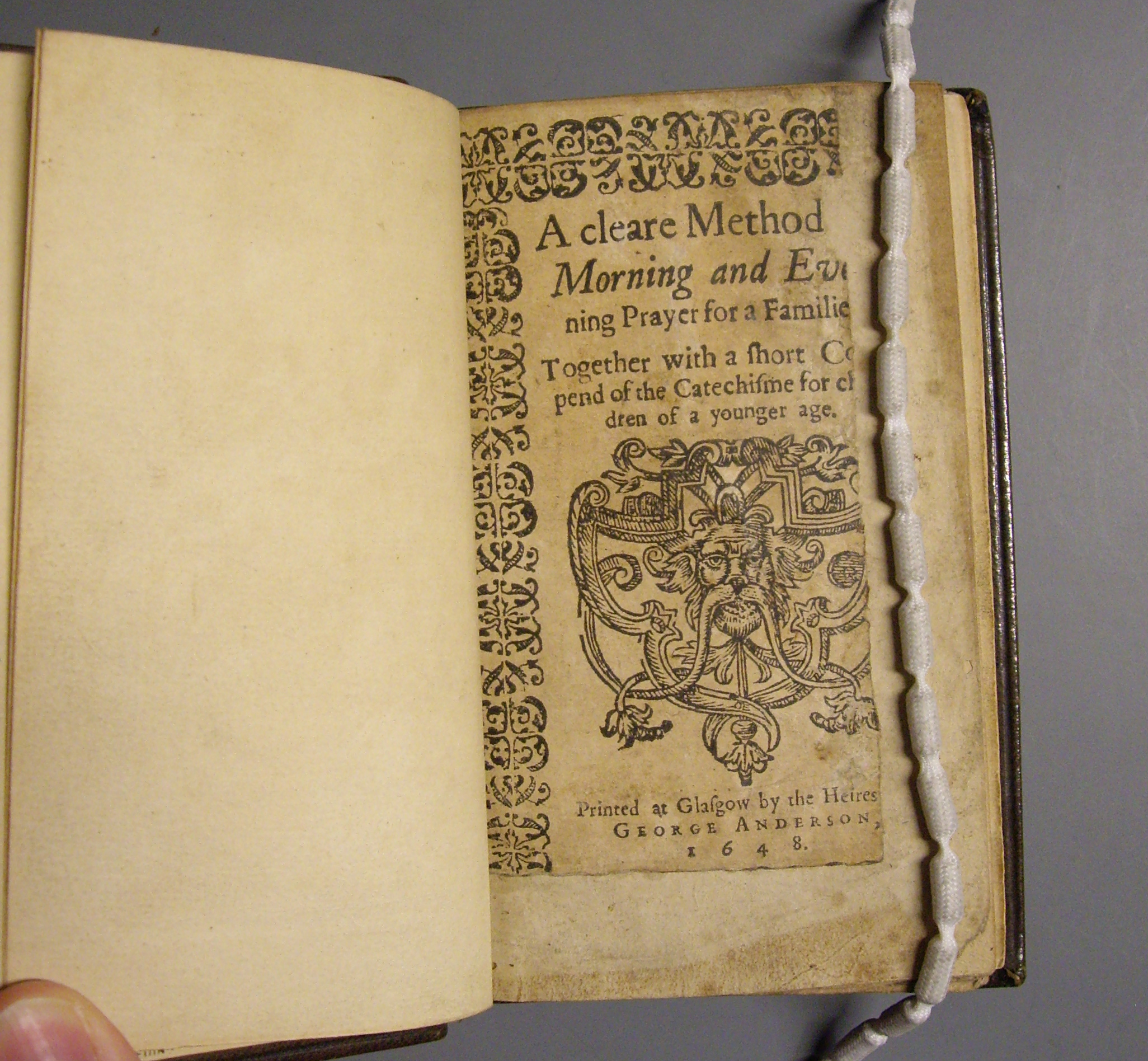
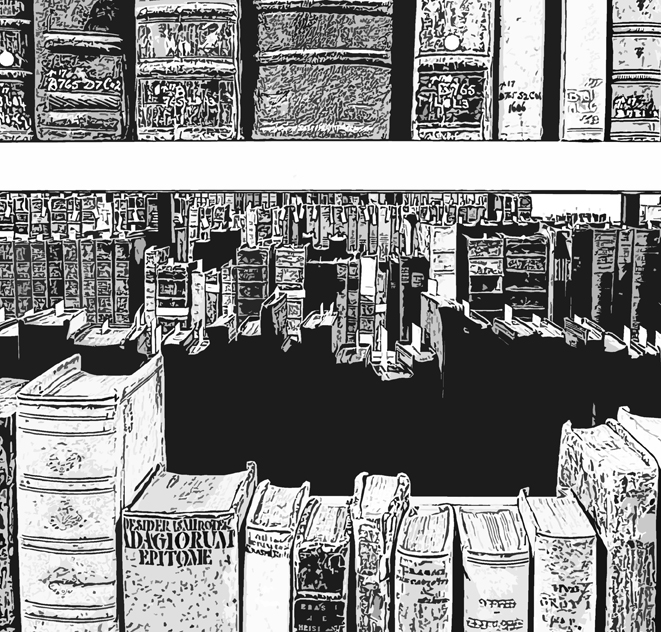
So, why is this find so important and what does this find tell us about the Scottish book trade? Well, George Anderson was the first printer to set up shop in Glasgow, having worked for a time in Edinburgh before coming to the West Coast on invitation from the town council and the General Assembly. Anderson remained in Glasgow until his death in 1647, when his business was transferred to his heirs (his widow); the town council agreed to subsidise the Anderson press “swa long as they continow in prenting in the towne” (SBTI), but the widow moved her family back to Edinburgh in 1649. Until this find, is was only known that the Heirs had operated out of Hutchisons Hospitall in the Trongate from 1647 to 1649 due to archival evidence, and there was only one other piece of printed evidence which demonstrated that the Heirs of George Anderson had actually printed anything in Glasgow, this book of Psalms. This survivor demonstrates at least one other item that was printed by the Heirs before shipping off back to Edinburgh. Also, the fact that what has been found here is a brief catechism, means that this is the first catechism to be printed in Glasgow, predating the earliest recorded by almost 10 years (which, ironically, was printed by George’s son, Andrew Anderson, who moved the family business back to Glasgow four years after taking over in 1653). However, most interestingly, is that, save the imperfect copy at the NLS, there are several unsold or unused sheets of this catechism which have been used as material for the board on St Andrews r17f DG676.3M7. Recycling unused or unwanted printed material for boards was quite common from the 15th century right the way up to the modern period, however the lack of extant copies and the stack of copies of this catechism used as boards on the St Andrews copy begs the question why. Was it offensive or banned? Not a good seller and therefore sold off in bulk? Or simply was so small, and therefore fragile, that hardly any copies survive?
Whatever the case, this find illustrates the fact that new early printed books are being uncovered all the time, and sometimes found in the most unlikely places. Cataloguing efforts at St Andrews alone have surfaced almost 75 new unique ESTC items in the past few years, and we’ve barely brushed the surface dust off of the uncatalogued backlog of rare books. Here’s hoping for many other similar finds!
–DG